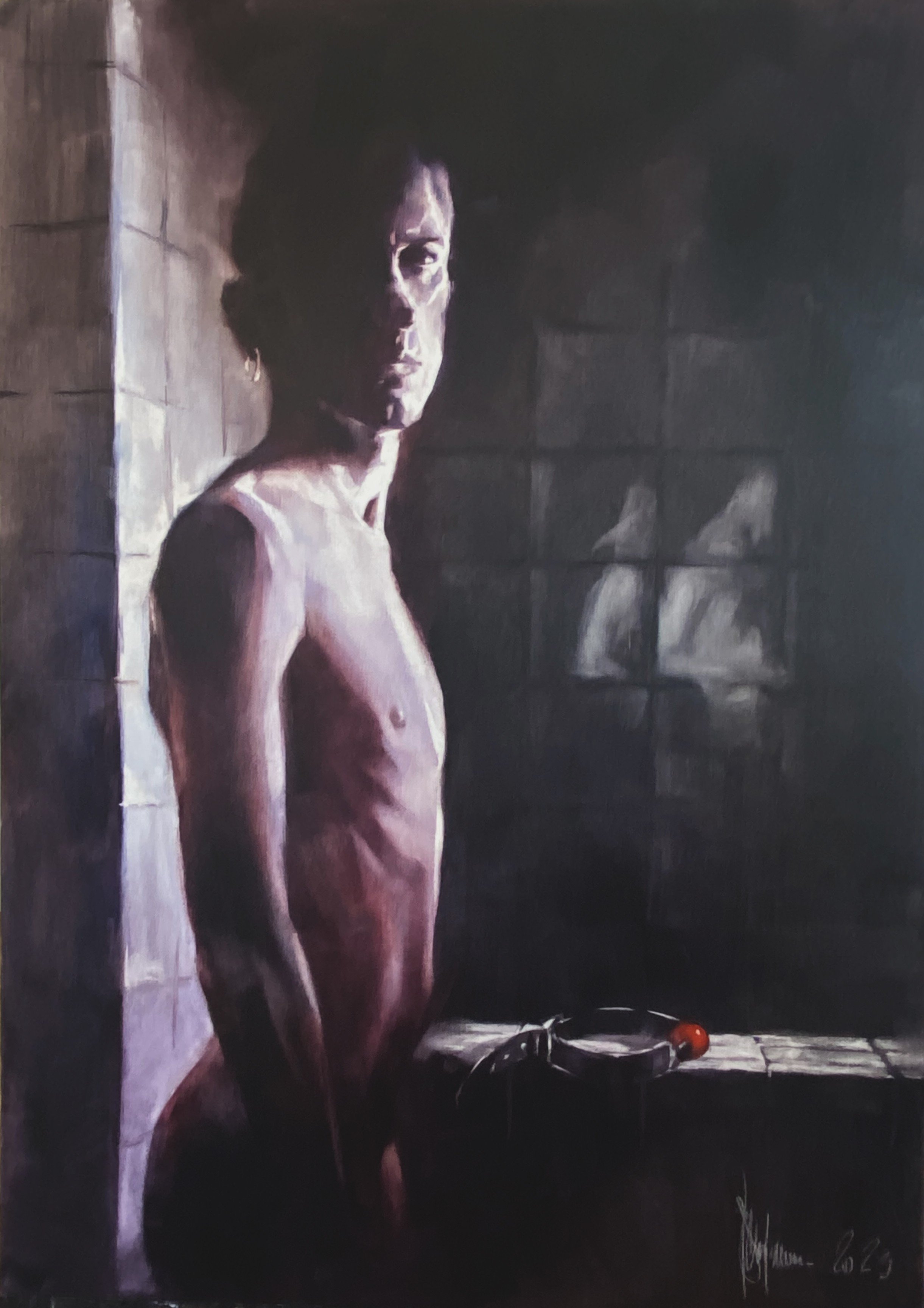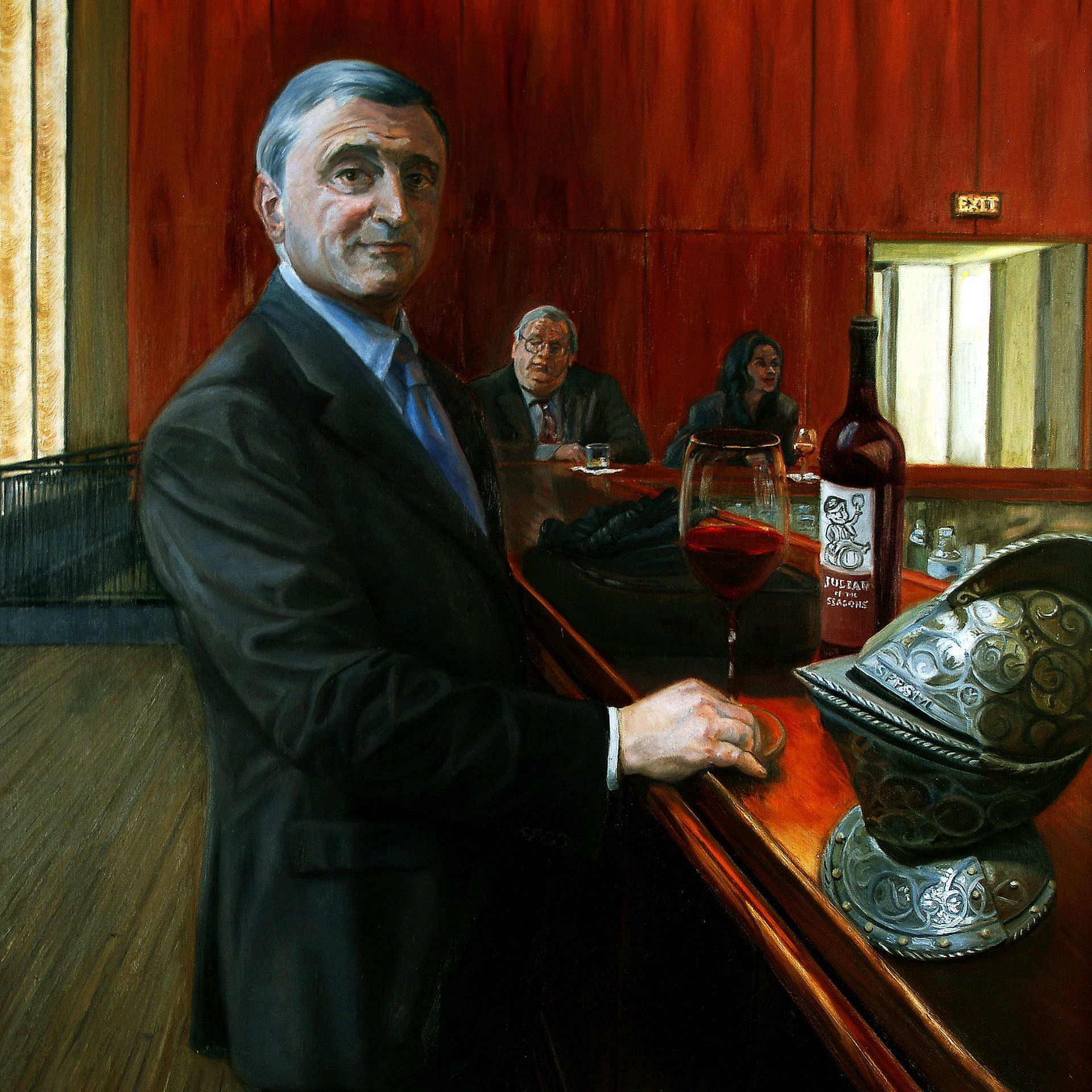Checking Out Iconic Artists and Their Influences on Figurative Oil Painting
Wiki Article
The Development of Figurative Oil Paint: Recognizing Its Historical Importance and Modern Interpretations
The evolution of metaphorical oil paint serves as an engaging lens through which to check out the interplay in between artistic expression and historical context. Contemporary musicians, drawing from this abundant heritage, are currently reinterpreting the human figure in methods that challenge conventional stories.Origins of Figurative Oil Paint
The beginnings of figurative oil painting can be traced back to the very early Renaissance in Europe, specifically in the 15th century. The development of oil paint allowed for higher depth of shade and information, boosting the realistic look and vibrancy of their work.
In this transformative period, numbers were commonly illustrated within contextually rich environments, showcasing not only their physical features yet likewise their mental states. Pioneers such as Jan van Eyck and Titian harnessed the tool's adaptability, utilizing layering techniques to achieve luminance and structure. This development facilitated the representation of complex materials and the subtleties of complexion, contributing to the growth of portrait and narrative scenes.
Additionally, the Renaissance emphasis on humanism promoted a gratitude for individualism, which subsequently influenced musicians to produce more dynamic and relatable numbers - figurative oil painting. Because of this, figurative oil paint emerged as an effective car for narration and psychological engagement, preparing for future artistic activities and styles
Trick Historical Motions
Significant historic movements have formed the evolution of metaphorical oil painting, each adding unique approaches and techniques that broadened the tool's possibilities. The Renaissance noted a pivotal moment, stressing realism and the human type, with musicians like Leonardo da Vinci and Michelangelo pushing the limits of physiological accuracy and point of view. Following this, the Baroque period brought dramatic contrasts of light and darkness, exhibited by Caravaggio, who infused spiritual motifs with intense emotionality.The 19th century introduced Romanticism and Realistic look, where musicians such as Delacroix and Courbet challenged classic suitables, concentrating on individual expression and daily life. The arrival of Impressionism further transformed the tool by stressing the effects of light and color, causing a separation from typical representation.
In the early 20th century, motions like Expressionism and Cubism redefined figurative paint with abstraction and the expedition of psychological deepness. Each of these activities not only reflected the societal changes of their times however likewise laid the foundation for modern analyses. The interaction in between these historic activities has created a rich tapestry of philosophies and styles, influencing modern musicians in their quest of capturing the human experience on canvas.
Methods and Materials Development

Throughout the Baroque period, strategies such as chiaroscuro and sfumato emerged, boosting the emotional vibration of figurative make-ups. Artists started to try out lusters and impasto, manipulating appearance and luminosity. By the 19th century, technologies like the use of pre-mixed paints in tubes changed availability, allowing artists to repaint en plein air and capture the short lived effects of light.
The 20th century experienced the intro of synthetic pigments and tools, which increased the combination and modified the consistency of oil paints. Additionally, the expedition of new application methods, such as scheme knives and brushes of varying stiffness, additional varied artistic expression. Jointly, these developments show the advancing relationship between products, strategies, and the artistic vision fundamental in figurative oil paint.

Contemporary Interpretations
Contemporary interpretations of figurative oil painting reflect a dynamic dialogue between tradition and innovation, where artists challenge developed standards and discover varied motifs. This development materializes in different methods, as contemporary artists blend classical strategies with modern-day principles, usually resolving social, political, and individual narratives.Numerous specialists draw ideas from historic works, yet they infuse their pieces with modern point of views, using the human form as a vehicle for discourse on identification, gender, and culture. Artists increasingly trying out abstraction, distortion, and combined media, which enables a broader analysis of the figure and its context.
Moreover, using brilliant color schemes and unique compositions usually offers to disrupt typical checking out experiences, provoking important interaction from target markets. This shift in emphasis prolongs past looks; it reflects an expanding awareness of the intricacies of human experience in an interconnected world.
As metaphorical oil painting remains to evolve, it stays a vital tool for exploring the nuances of modern life, embodying both a regard for heritage and a commitment to progressive thought. The outcome is a rich tapestry of expression that reverberates with the intricacies of the modern human condition.
Influence On Modern Art
The effect of metaphorical oil painting on contemporary art is extensive, as it has actually continually influenced a myriad of creative activities and techniques throughout the 20th and 21st centuries. From Expressionism to Surrealism and beyond, the exploration of the human figure has actually continued to be a main theme, allowing artists to communicate complicated feelings and stories. This focus on metaphorical depiction has actually brought about a re-examination of traditional techniques, resulting in ingenious techniques that mix realistic look with abstraction.
Additionally, modern musicians have actually accepted metaphorical oil painting as a way to attend to political and social concerns, making use of the tool to test understandings of gender, culture, and identity. The resurgence of interest in metaphorical operate in current years shows a yearning for connection in an increasingly electronic globe, where human experience and emotion click here for more info are critical.
Additionally, the discussion in between figurative oil painting and modern-day art appears in the jobs of artists such as Kehinde Wiley and Jenny Saville, who make use of historic references while instilling their items with contemporary relevance. Inevitably, metaphorical oil painting remains to form and redefine modern imaginative expression, emphasizing its enduring significance in the art globe.
Final Thought
The evolution of metaphorical oil painting underscores its historical importance and flexibility throughout various imaginative motions. From the naturalism of the Renaissance to the emotive expressions of the Baroque and the ingenious methods of modernity, this tool has continually changed. Contemporary interpretations show dynamic shades and non-traditional use this link make-ups, promoting crucial involvement with social and political motifs. Ultimately, metaphorical oil paint stays an essential medium for discovering the human experience, resonating exceptionally in today's electronic landscape.The advancement of figurative oil painting serves as an engaging lens via which to examine the interplay in between imaginative expression and historic context.Significant historical movements have formed the advancement of metaphorical oil painting, each contributing distinct approaches and strategies that increased the medium's possibilities.As historical motions shaped the trajectory of figurative oil painting, the methods and products used by musicians have Bonuses actually additionally undergone significant transformations. figurative oil painting.The impact of figurative oil painting on modern art is profound, as it has constantly inspired a myriad of artistic movements and practices throughout the 20th and 21st centuries.The evolution of figurative oil paint emphasizes its historic value and flexibility throughout different creative motions
Report this wiki page